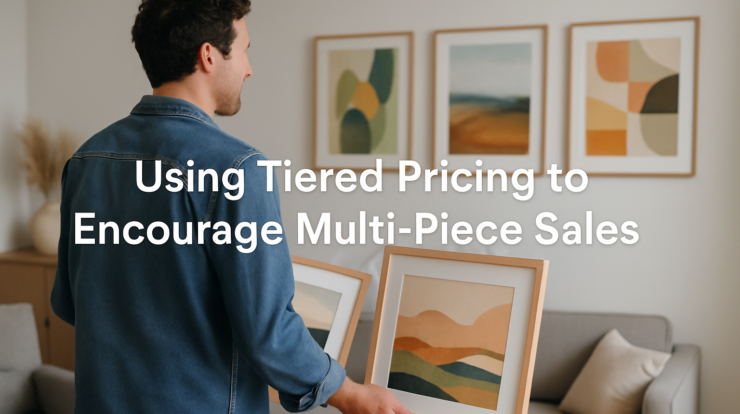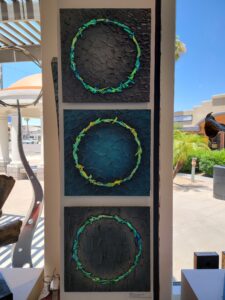
I’ve long believed that pricing art is both an art and a science. We want to be intentional about the value we place on our work—but we also want to create opportunities for buyers to collect more. One strategy that’s gaining traction, and that we’ve actively tested in the gallery, is tiered pricing for multi-piece purchases.
It’s a simple idea: buy one at full price, buy two or more and get a discount. But behind that simplicity is a powerful tool for increasing the average sale and encouraging collectors to think beyond just a single piece.
Why Tiered Pricing Works

Buyers often make decisions in the moment. They see a piece they love, and they’re weighing not just whether they want it, but whether they can justify the purchase. Now, imagine that same buyer is presented with a group of works that fit beautifully together—same size, same theme, cohesive presentation—and then learns that purchasing more than one comes with a price advantage.
At that point, the mental calculus shifts from “Should I buy this one?” to “Should I get two or three?” That’s a very different kind of conversation—and one that can lead to bigger sales.
We’ve seen this happen consistently in the gallery when the price points are accessible (generally under $2,000 per piece) and the works are presented as natural groupings—diptychs, triptychs, or just well-matched companion pieces.
A Simple Tiered Structure That Works
There’s no need to reinvent the wheel. We’ve found that the following structure strikes the right balance between maintaining value and rewarding commitment:
-
One piece: Full price (though, of course, you’re free to negotiate if appropriate)
-
Two pieces: 8–10% discount
-
Three pieces: 12–15% discount
-
Four pieces: 15–20% discount
It’s generous enough to make an impact but still protects your margins. And because this discount structure isn’t advertised as a “sale,” it feels more like a professional courtesy—a collector’s reward for deepening their engagement with your work.
When Tiered Pricing Makes the Most Sense

Like any strategy, tiered pricing isn’t one-size-fits-all. But it tends to work best when:
-
The works are similar in size and scale: It’s easier for buyers to envision multiple pieces displayed together.
-
There’s a strong visual or thematic connection: A cohesive group feels natural to collect as a set.
-
You’re working at lower to mid-range price points: The incentive carries more weight when the buyer isn’t already making a five-figure decision.
-
You’re having a direct conversation with the collector: Whether in person, by email, or over the phone, tiered pricing works best when it’s offered as part of a thoughtful dialogue.
Will Collectors Think It Devalues the Work?
Not at all—if you handle it well. This isn’t a clearance sale or a fire drill. It’s a curated, intentional offer to those who are making a bigger commitment to your work. You’re not dropping your prices across the board or undercutting your value. You’re simply rewarding volume.
And let’s not forget: most collectors understand that buying multiple pieces may open the door to some negotiation. Tiered pricing just provides a clearer framework for that possibility—without making it feel arbitrary.
Final Thoughts
If you’re building a body of work that lends itself to groupings—especially small- to mid-sized pieces—tiered pricing is a smart, professional way to nudge collectors toward deeper engagement. You’re not just selling more art; you’re helping buyers envision your work as a part of their environment in a bigger, more lasting way.
It doesn’t need to be flashy. Just quiet, confident, and consistent.
Have you tried offering multi-piece discounts? I’d love to hear how you approach it—or help you think through how to implement it effectively.